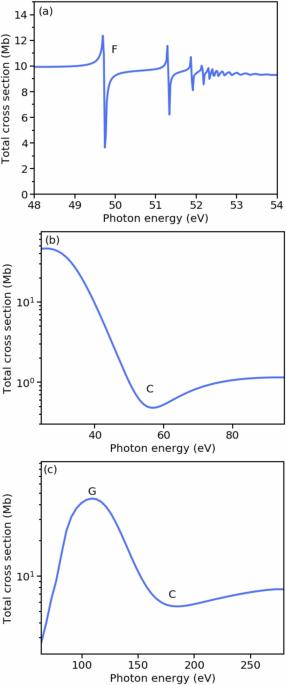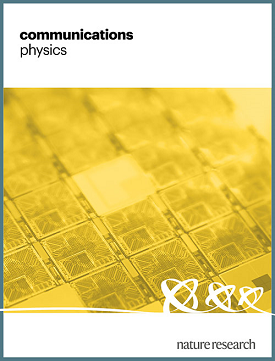惰性气体原子中空穴排列的相对论处理
IF 5.4
1区 物理与天体物理
Q1 PHYSICS, MULTIDISCIPLINARY
引用次数: 0
摘要
阿秒物理学的发展使我们能够在时域内对原子和分子进行前所未有的控制。在这里,超短脉冲被用来制备特定磁态的原子离子,这可能对控制分子中的电荷迁移非常重要。我们的工作填补了飞秒和阿秒脉冲制备相对论空穴排列的知识空白。研究重点是优化脉冲的中心频率和持续时间,以利用特定的光谱特征,如法诺剖面、库珀极小值和巨共振。模拟采用相对论时变构型-相互作用单次法进行。在氩的外壳空穴中观察到了大比率(约 100)的超快空穴排列。在氙的内壳空穴中观察到了更大的对准(约为一千)。在这项工作中,作者研究了飞秒和阿秒脉冲电离的惰性气体原子中具有不同磁量子数的空穴的分布。他们通过调整脉冲参数和利用特定光谱特征,实现了对空穴排列的高度控制。本文章由计算机程序翻译,如有差异,请以英文原文为准。

Relativistic treatment of hole alignment in noble gas atoms
The development in attosecond physics allows for unprecedented control of atoms and molecules in the time domain. Here, ultrashort pulses are used to prepare atomic ions in specific magnetic states, which may be important for controlling charge migration in molecules. Our work fills the knowledge gap of relativistic hole alignment prepared by femtosecond and attosecond pulses. The research focuses on optimizing the central frequency and duration of pulses to exploit specific spectral features, such as Fano profiles, Cooper minima, and giant resonances. Simulations are performed using the Relativistic Time-Dependent Configuration-Interaction Singles method. Ultrafast hole alignment with large ratios (on the order of one hundred) is observed in the outer-shell hole of argon. An even larger alignment (on the order of one thousand) is observed in the inner-shell hole of xenon. In this work, the authors investigate the distribution of holes with different magnetic quantum numbers in noble gas atoms, ionized by femtosecond and attosecond pulses. They achieve high control over hole alignment by adjusting pulse parameters and exploiting specific spectral features.
求助全文
通过发布文献求助,成功后即可免费获取论文全文。
去求助
来源期刊

Communications Physics
Physics and Astronomy-General Physics and Astronomy
CiteScore
8.40
自引率
3.60%
发文量
276
审稿时长
13 weeks
期刊介绍:
Communications Physics is an open access journal from Nature Research publishing high-quality research, reviews and commentary in all areas of the physical sciences. Research papers published by the journal represent significant advances bringing new insight to a specialized area of research in physics. We also aim to provide a community forum for issues of importance to all physicists, regardless of sub-discipline.
The scope of the journal covers all areas of experimental, applied, fundamental, and interdisciplinary physical sciences. Primary research published in Communications Physics includes novel experimental results, new techniques or computational methods that may influence the work of others in the sub-discipline. We also consider submissions from adjacent research fields where the central advance of the study is of interest to physicists, for example material sciences, physical chemistry and technologies.
 求助内容:
求助内容: 应助结果提醒方式:
应助结果提醒方式:


